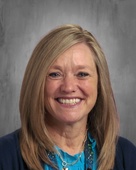Book of the Month Review
August/September
Culturally Responsive Teaching and the Brain
by Zaretta Hammond Published in 2014
To close the achievement gap, diverse classrooms need a proven framework for optimizing student engagement. Culturally responsive instruction has shown promise, but many teachers have struggled with its implemention - until now.
In this book, Zaretta Hammond draws on cultting-edge neuroscience research to offer an innovative approach for designing and implementing brain-compatible culturally responsive instruction. The book includes:
- Information on how one's culture programs the brain to process data and affects learning relationships.
- Ten "key moves" to build students' learners operating systems and prepare them to become independent learners
- Prompts for action and value self-reflection
October/November
Blind Spot
by Banaji and Greenwald Published 2013
"I know my own mind.
I am able to assess others in a fair and accurate way."
These self-perceptions are challenged by leading psychologists Mahzarin R. Banaji and Anthony G. Greenwald as they explore the hidden biases we all carry from a lifetime of exposure to cultural attitudes about age, gender, race, ethnicity, religion, social class, sexuality, disability status, and nationality.
“Blindspot” is the authors’ metaphor for the portion of the mind that houses hidden biases. Writing with simplicity and verve, Banaji and Greenwald question the extent to which our perceptions of social groups―without our awareness or conscious control―shape our likes and dislikes and our judgments about people’s character, abilities, and potential.
In Blindspot, the authors reveal hidden biases based on their experience with the Implicit Association Test, a method that has revolutionized the way scientists learn about the human mind and that gives us a glimpse into what lies within the metaphoric blindspot.
December/January
Excellence Through Equity - Five Principles of Courageous Leadership to Guide Achievement for Every Student
by Alan M. Blankstein and Pedro Noguera with Lorena Kelly Published 2016
Excellence Through Equity is an inspiring look at how real-world educators are creating schools where all students are able to thrive. In these schools, educators understand that equity is not about treating all children the same. They are deeply committed to ensuring that each student receives what he or she individually needs to develop their full potential—and succeed.
To help educators with what can at times be a difficult and challenging journey, Blankstein and Noguera frame the book with five guiding principles of Courageous Leadership:
- Getting to your core
- Making organizational meaning
- Ensuring constancy and consistency of purpose
- Facing the facts and your fears
- Building sustainable relationships
They further emphasize that the practices are grounded in three important areas of research that are too often disregarded: (1) child development, (2) neuroscience, and (3) environmental influences on child development and learning.
February/March
We Can't Teach What We Don't Know
by Gary Howard Published 2016
Gary Howard outlines what good teachers know, what they do, and how they embrace culturally responsive teaching. Change Begins With Us: School transformation begins with the teachers' willingness to change their classroom structures, school structures, and themselves. It is crucial that teachers make the commitment to look deep inside themselves to see how they can better their attitudes, practices, and beliefs related to race and cultural differences. This book is a reminder to teaching is more than a job; it is a vocation in which we must dedicate our entire self.
April/May
June/July/August










